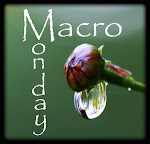Spices have been used in Italy since Roman times, when if anything they were used to excess, drowning the flavor of other ingredients. Nowadays spices are used in smaller quantities but they are present in many dishes. The following list describes those spices most frequently used in Italian recipes.
 CORIANDER [coriandolo]
CORIANDER [coriandolo]
Crushed coriander seeds are used in various meat dishes, particularly lamb and pork.
 GINGER [zenzero]
GINGER [zenzero]
This spice is rarely used in Italian cooking, except in the region of Apulia and Basilicata in southern Italy, where it is very popular.
 NUTMEG [Noce moscata]
NUTMEG [Noce moscata]
The Italians are fond of this spice, both in sweet and savory dishes. Ground nutmeg has none of the fresh flavor and aroma of the freshly grated kind, therefore whole nutmegs should be bought and grated directly into the dish at the time of cooking. Nutmeg is a common ingredient in ravioli and dishes which contain spinach or cheese.
 PEPPER [pepe]
PEPPER [pepe]
Black peppercorns should always be used. Grind them fresh at the time of cooking or serving; never use ready-ground pepper.
 SAFFRON [zafferano]
SAFFRON [zafferano]
This is used mostly in risotto and in fish soups and stews. Saffron is very expensive and therefore used sparingly. Saffron threads are probably the easiest and most economical way of using saffron: they should be steeped in a little warm water until the color and aroma are extracted; the water should then be strained and added to the dish.
 SALT [sale]
SALT [sale]
Sea salt is used throughout Italy. Coarse sea salt rather than table or cooking salt is the type to use.
 VANILLA [vaniglia]
VANILLA [vaniglia]
Vanilla is a popular flavoring in sweet dishes, and vanilla sugar sold in sachets is frequently used with ordinary sugar to give flavor to cakes and pastries. The Italians use vanilla pods (beans) rather then essence (extract).
Herbs are an important flavoring in Italian cooking and fresh ones are normally used, because most Italians either grow their own or have easy access to fresh herbs. In the winter months home-dried herbs are used. Herbs can be grown easily in pots on the windowsill or in the garden - they should be picked in the summer at the height of the growing season, then stored in the freezer or hung up to dry in a cool, airy place away from damp. Once dry, they should be stored in airtight containers.

 Basil (basilico)
Basil (basilico)
There are numerous varieties of this spicy, aromatic herb, but sweet basil and bush basil are the most common. It is used mostly in dishes that contain tomatoes, and in salads, soups and on pizzas. Freshly chopped basil should be used whenever possible, as dried basil makes a poor substitute. If buying dried basil, however, always choose the sweet kind; its flavor is much less pungent than other varieties.
 Bay Leaves (lauro)
Bay Leaves (lauro)
Bay leaves are used as a flavoring for casseroles, soups and sometimes roasts.
 Borage (borragine)
Borage (borragine)
Borage has a flavor not unlike cucumber. It grows all over Italy, and is used both as a flavoring and as a vegetable. Ravioli is stuffed with borage in Genoa. Borage leaves are also served like spinach or dipped in batter and deep-fried as fritters.
 Fennel (finocchio)
Fennel (finocchio)
Fennel is used in three ways in Italian cooking. The bulb, known as Florence fennel or finocchio, is used whole, sliced or quartered as a vegetable, and either braised or baked au gratin. It is also chopped raw in salads. Wild fennel stems (finocchiella) and the frondy leaves, which have the slightly bitter tang of aniseed, are used in cooking to flavor sauces, particularly in fish and sometimes pork dishes. They are also chopped and added to mayonnaise, eggs and cold fish dishes. Fennel seeds are a common flavoring in spiced sausages and other cooked meats, Finocchiona salame being the best known of these.
 Juniper (ginepro)
Juniper (ginepro)
The berries of the juniper bush are used in pork and game dishes and in marinades. If they are to be included in a dish such as a stuffing they should always be crushed first. Use juniper berries sparingly as their flavor can be bitter if used in too large a quantity.
 Marjoram, Sweet (maggiorana)
Marjoram, Sweet (maggiorana)
This herb is sometimes used in soups, stews, vegetable and fish dishes. If necessary it can act as a substitute for oregano.
 Myrtle (mirto)
Myrtle (mirto)
The Sardinians make full use of myrtle to flavor meats, particularly when spit-roasting young animals. This herb is used elsewhere in Italy, but not to the same extent.
 Oregano (origano)
Oregano (origano)
This is also known as wild marjoram. It is an essential ingredient in many Italian dishes, including pizzas, sauces and casseroles, but its flavor differs slightly from one region to another.
 Parsley (prezzemolo)
Parsley (prezzemolo)
Italian parsley is the flat-leaved variety as opposed to the curly "moss" variety common in Britain and the United States. Flat-leaved parsley can usually be found at continental stores, where it is often called "continental parsley". Its flavor is far more pungent than curly parsley, and for this reason it is generally used as a flavoring in Italian dishes rather than as a simple garnish. For Italian recipes where parsley is specified, try to obtain the flat-leaved variety; other parsley can be used as a substitute, but the flavor of the finished dish will not be quite the same.

 Rosemary (rosemarino)
Rosemary (rosemarino)
The Italians are very fond of flavoring lamb and suckling pig with rosemary. It is also used liberally in soups and stews. However it is wise to treat this herb with a little caution, since its distinctive flavor can easily overpower ingredients with more subtle flavors.

 Sage (salvia)
Sage (salvia)
Sage is commonly used in liver and veal dishes.
Crushed coriander seeds are used in various meat dishes, particularly lamb and pork.
This spice is rarely used in Italian cooking, except in the region of Apulia and Basilicata in southern Italy, where it is very popular.
The Italians are fond of this spice, both in sweet and savory dishes. Ground nutmeg has none of the fresh flavor and aroma of the freshly grated kind, therefore whole nutmegs should be bought and grated directly into the dish at the time of cooking. Nutmeg is a common ingredient in ravioli and dishes which contain spinach or cheese.
Black peppercorns should always be used. Grind them fresh at the time of cooking or serving; never use ready-ground pepper.
This is used mostly in risotto and in fish soups and stews. Saffron is very expensive and therefore used sparingly. Saffron threads are probably the easiest and most economical way of using saffron: they should be steeped in a little warm water until the color and aroma are extracted; the water should then be strained and added to the dish.
Sea salt is used throughout Italy. Coarse sea salt rather than table or cooking salt is the type to use.
Vanilla is a popular flavoring in sweet dishes, and vanilla sugar sold in sachets is frequently used with ordinary sugar to give flavor to cakes and pastries. The Italians use vanilla pods (beans) rather then essence (extract).
Herbs are an important flavoring in Italian cooking and fresh ones are normally used, because most Italians either grow their own or have easy access to fresh herbs. In the winter months home-dried herbs are used. Herbs can be grown easily in pots on the windowsill or in the garden - they should be picked in the summer at the height of the growing season, then stored in the freezer or hung up to dry in a cool, airy place away from damp. Once dry, they should be stored in airtight containers.

There are numerous varieties of this spicy, aromatic herb, but sweet basil and bush basil are the most common. It is used mostly in dishes that contain tomatoes, and in salads, soups and on pizzas. Freshly chopped basil should be used whenever possible, as dried basil makes a poor substitute. If buying dried basil, however, always choose the sweet kind; its flavor is much less pungent than other varieties.
Bay leaves are used as a flavoring for casseroles, soups and sometimes roasts.
Borage has a flavor not unlike cucumber. It grows all over Italy, and is used both as a flavoring and as a vegetable. Ravioli is stuffed with borage in Genoa. Borage leaves are also served like spinach or dipped in batter and deep-fried as fritters.
Fennel is used in three ways in Italian cooking. The bulb, known as Florence fennel or finocchio, is used whole, sliced or quartered as a vegetable, and either braised or baked au gratin. It is also chopped raw in salads. Wild fennel stems (finocchiella) and the frondy leaves, which have the slightly bitter tang of aniseed, are used in cooking to flavor sauces, particularly in fish and sometimes pork dishes. They are also chopped and added to mayonnaise, eggs and cold fish dishes. Fennel seeds are a common flavoring in spiced sausages and other cooked meats, Finocchiona salame being the best known of these.
The berries of the juniper bush are used in pork and game dishes and in marinades. If they are to be included in a dish such as a stuffing they should always be crushed first. Use juniper berries sparingly as their flavor can be bitter if used in too large a quantity.
This herb is sometimes used in soups, stews, vegetable and fish dishes. If necessary it can act as a substitute for oregano.
The Sardinians make full use of myrtle to flavor meats, particularly when spit-roasting young animals. This herb is used elsewhere in Italy, but not to the same extent.
This is also known as wild marjoram. It is an essential ingredient in many Italian dishes, including pizzas, sauces and casseroles, but its flavor differs slightly from one region to another.
Italian parsley is the flat-leaved variety as opposed to the curly "moss" variety common in Britain and the United States. Flat-leaved parsley can usually be found at continental stores, where it is often called "continental parsley". Its flavor is far more pungent than curly parsley, and for this reason it is generally used as a flavoring in Italian dishes rather than as a simple garnish. For Italian recipes where parsley is specified, try to obtain the flat-leaved variety; other parsley can be used as a substitute, but the flavor of the finished dish will not be quite the same.

The Italians are very fond of flavoring lamb and suckling pig with rosemary. It is also used liberally in soups and stews. However it is wise to treat this herb with a little caution, since its distinctive flavor can easily overpower ingredients with more subtle flavors.

Sage is commonly used in liver and veal dishes.






















8 comments:
Wonderful Susan! I love this one and the sauce post, great information, thank you!
Great list! The only ones that I don't use here are Borrage and Juniper, but Italian cooking from North to South varies greatly so it's a question of family traditions. I find that mint is also a herb used a lot on the Amalfi/Salerno coast in Italy.
I agree it is a question of family tradition.
Now my Dad was born in Messina and grew up in Calabria...certain herbs and spices were not part of everyday cooking either.
Although he experimented I too
love trying the unfamiliar ones and adding them in when I can.
Very informative post! Brava!
I think fresh basil and rosemary are my favorites.
I especially like pan frying rosemary - it tastes amazing that way all crispy!
Thanks for all the info, very beautifully done.
Thank you my friends:)
What a great info list of the spices and herbs!
Post a Comment